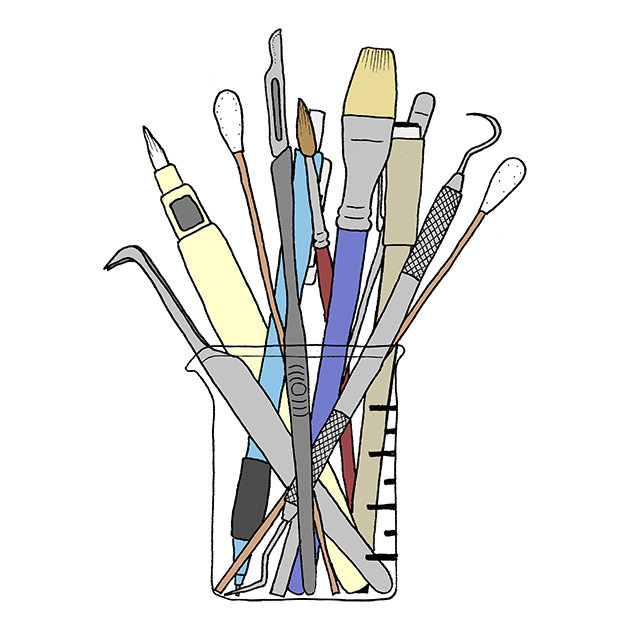We discuss who we are as conservators: the demographics, the diversity (or lack thereof), and what a typical conservator is like. Who are we, why are we, and can we change it?
00:50 News in brief
01:26 Who are we? What does a typical conservator look like?
04:55 Stereotypes of conservators
10:05 Education and qualifications
14:14 Age range in conservators – and previous careers!
17:48 Disabilities amongst conservators
26:56 Ethnicity and class
36:20 Is there a white middle class way of conserving objects?
41:23 Summary
42:08 Men in conservation (and why we love them)
44:30 Review: Toggl app
47:06 Comments, questions, corrections
Show Notes:
– Propose a session for Museums Association’s 2017 Conference: http://www.museumsassociation.org/news/24012017-propose-a-session-for-manchester-2017
– Conservation Labour Market Intelligence Survey: http://icon.org.uk/system/files/documents/conservation_labour_market_intelligence_2012-13_0.pdf
– Toggl timekeeping app: http://www.toggl.com
Hosted by Jenny Mathiasson, Kloe Rumsey, and Christina Rozeik.
Intro and outro music by DDmyzik used under a Creative Commons Attribution license.
Made available under a Creative Commons Attribution-NonCommercial 4.0 International license.
A Wooden Dice production, 2017.


Hello from sunny California!
First, some context to go with your demographic analysis: My wife and I operate an independent practice in San Jose, CA. This is her third career. She has an undergrad degree in graphic design, was trained for paintings conservation in Florence, and is highly creative with top-notch hand skills. She is, however, not white and has no learning disabilities. (I’m white with some disabilities, but I don’t really touch the artwork so it doesn’t count)
Demographics in the US are curious. While women arppear to be dominant in practice (at least among conservators who attend the AIC conference) the “royalty” in the field tend to be predominantly male.
Another characteristic that’s interesting is that it seems to be difficult to convince the seasoned professionals to retire or at least shift to mentoring the new graduates etc. to make room for new blood. I swear these folks are going to die with a spatula in one hand and a swab in the other…
The institutional jobs are generally impossible to get without an advanced degree, and there aren’t many postgrad programs in the country, particularly on the west coast.
There is a definite bias among professionals for those who came out of these programs, to the extent that periodic efforts to establish credentialing standards automatically assume that institutional education will be a requirement without any regard for experience, especially expertise in independent practice.
At the same time, institutions are frequently turning to contract conservation instead of full-time staff. This all creates a system that makes it nearly impossible to enter the field. (Much wailing and gnashing of teeth about this on LinkedIn.) And this is also why no one is starting new postgraduate programs in the US; with a glut of stymied emerging conservators, who wants to train more?
A side note on disabilities: I thought it was interesting that you hinted that certain disabilities might actually be beneficial to the conservation practice. Our practice is centered in Silicon Valley, where those on the less-severe end of the autism spectrum can thrive and in fact become darlings in technological fields. There is clearly a link between autism and technical hyper-proficiency.